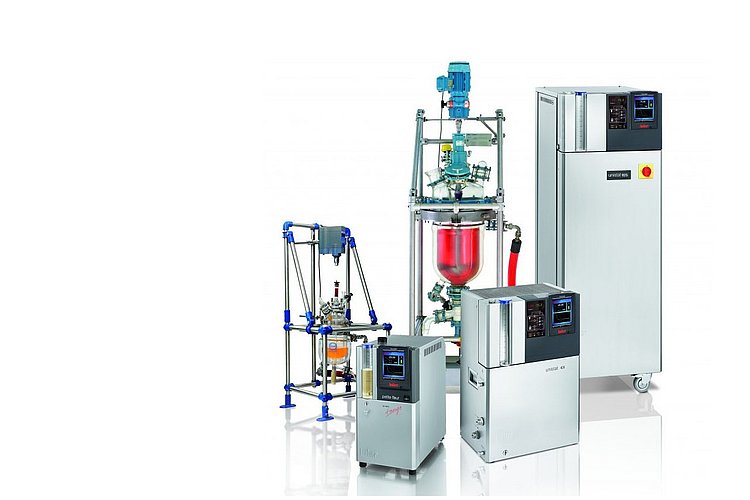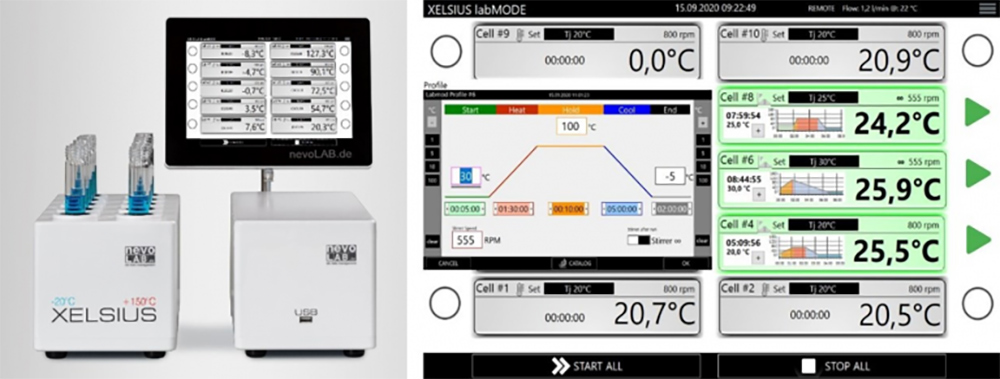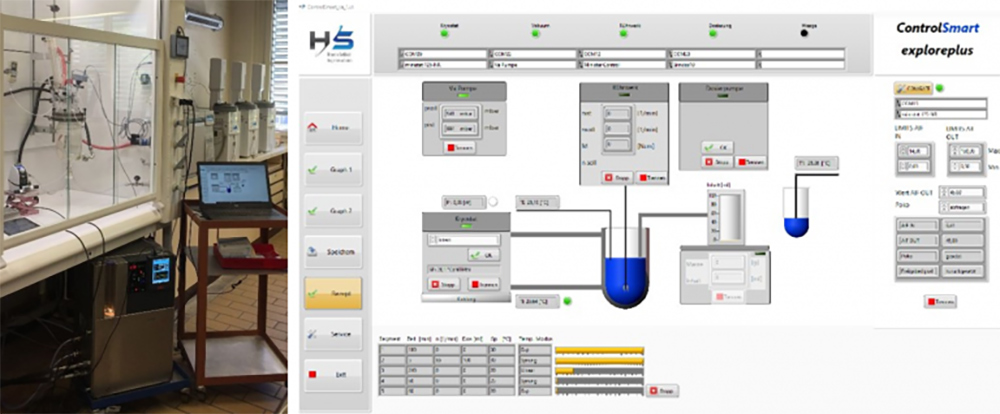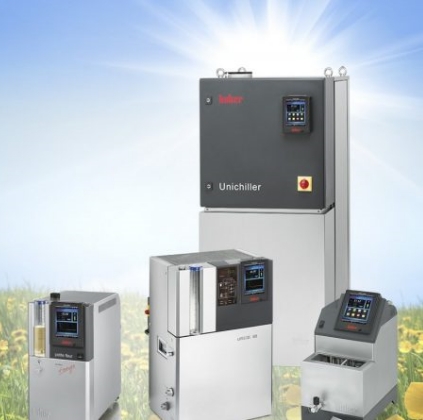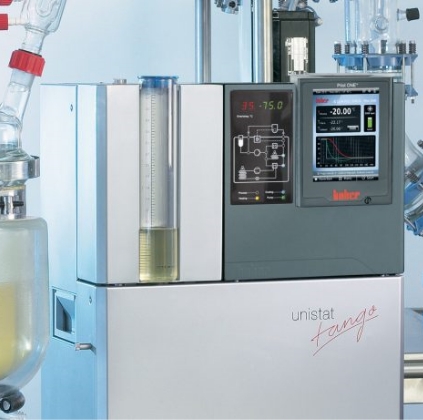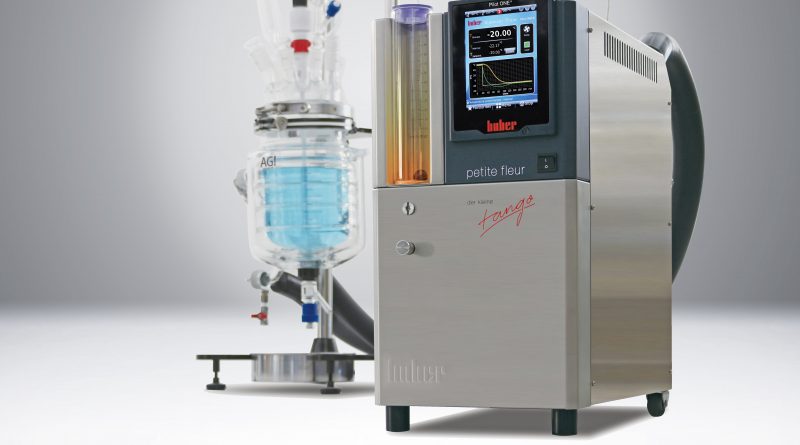Scale up and scale down in chemical syntheses
Simple handling due to only a few interventions in the process
What works well in the laboratory may not work so well and easily one or two steps further on in production. After all, laboratory conditions are one thing and cannot always be compared with production conditions in kilo labs and pilot plants.
With scale up and scale down, the questions arise, among others:
- Where to start and where to stop?
- What equipment is needed?
- Which equipment can also be used in further stages?
- Is there an easy handling?
A look at today's chemistry laboratory shows that microelectronics and microprocessor technology have been around for several years. Whether temperature control unit, stirrer, dosing pump, balance... many devices today have interfaces that allow control via DCS or computer. What used to be - and still often is - operated by hand can also be controlled well and often inexpensively with the help of laboratory automation software, which ideally can also be used to transfer the process conditions from laboratory scale to a larger scale.
In the laboratory, for example, syntheses in the range from 2 ml to about 30 ml are suitable in a first stage. Here, it makes sense if several reactions can be processed in parallel in one experiment. If the individual experimental approaches can be controlled and tempered separately, this offers a very high degree of flexibility.
The availability of reflux condenser and inerting units, miniaturized ports and fittings in standard laboratory thread formats, as well as integrated sensors (e.g. measurement of turbidity and liquid temperature), allow reproducible tests to be carried out quickly on a laboratory scale, which can also be transferred to larger approaches in the pilot plant and in production. Furthermore, a complete documentation offers the comparability of the individual syntheses.
The figure above shows the possibility of tempering 10 parallel syntheses with max. 30 ml product each. Within a very short time, the individual cells can be heated and cooled separately. The measured values can be easily displayed numerically and graphically and can be easily exported via USB stick for further processing.
For syntheses from e.g. 100 ml to 10 liters, equipment and components are usually required that can provide and transport higher outputs (e.g. cooling outputs and heating outputs). Temperature control units must have the appropriate cooling and heating capacities and ensure sufficient pump performance (high flow rate). Care must be taken to ensure that the equipment outputs can be transferred to the production process in the laboratory or pilot plant. This means that both heating or cooling capacity and the pump capacity of the equipment available in the production process are included in the test planning.
As a classic example, it should be mentioned that, for example, in a later production plant, the temperature difference from the jacket temperature to the process temperature is in the range of 1-5 K. This means that the temperature difference between the jacket temperature and the process temperature can be very large. A large temperature difference, which would be easy to realize on a laboratory scale, is of little use in the actual process, however, since in production plants, for example, large heating and cooling capacities for large production quantities have to be provided at great expense. A small temperature difference, on the other hand, ensures "gentle" temperature control of the product even in the reactor core.
The figure above shows a "standard laboratory": A temperature control unit monitors the temperature of a 2 liter double jacket reactor. The substances in the reactor are mixed by means of an agitator. A dosing pump fills a defined quantity of e.g. another liquid into the reactor core (process).
There are a wide variety of software solutions from suppliers that offer customers a wide range of solutions for scale up in the range of a few milliliters, over several hundred milliliters to several 10 liters. Figure 5 shows an example of a simple solution representative of many software solutions.
Since today's laboratory instruments and components have interfaces (e.g. RS232 and USB), these components can be controlled in a relatively uncomplicated way. Simple tasks can thus be carried out quickly and reliably. Metering "by hand" and logging can be omitted, since the software takes over the control and the measured values can be recorded.
The figure above shows a plant typically used on a kilo laboratory scale. Such plants and software solutions also offer relatively high flexibility in process development and process optimization. Processes that were previously developed on a smaller scale can be adopted here and, if necessary, further developed.
In the same way, information can flow from the kilo laboratory scale to the laboratory scale (scale down). Some companies project the complete plants (hardware and software). Existing plants can also be converted - with the appropriate hardware - to meet new challenges.
Figure 6 shows laboratory automation software on the right, which is used for simple and more complex batch and continuous processes. Depending on the plant, sensors and valves can be integrated here at various points for automation and documentation. Many processes can be reproducibly automated via recipe control.
There are very good possibilities on the market for laboratory technology to perform a well-functioning scale up and scale down in synthesis reactions. Many important parameters can be measured, compared and adjusted in the individual steps.
